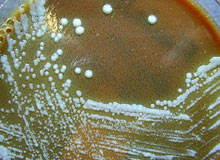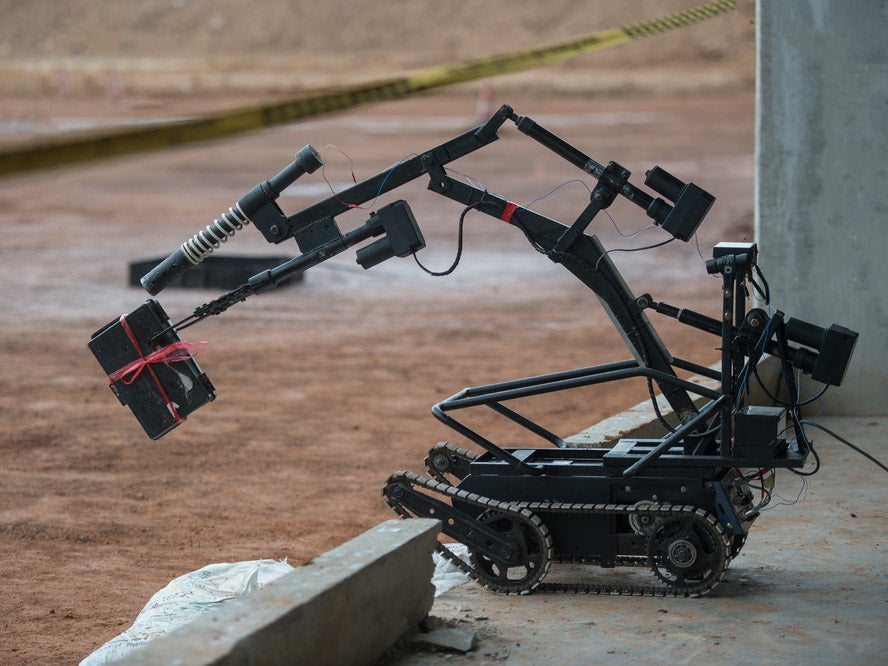
Since the days of antiquity, biological warfare has been part of many conflicts between states and nations. It is thought that the ancient Anatolian Hittites were the first to make use of biological warfare by driving the victims of plague into the lands of their enemies with the aim of inflicting deathly illnesses on them during the 18th century.
Centuries later, biological warfare was prohibited by the Geneva Accord of 1925 and following its use by both Germany and Japan during World War Two, it came into greater disrepute.
This led to the convention on the prohibition of the development, production and stockpiling of bacteriological (biological) and toxin weapons and on their destruction – better known as the biological weapons convention (BWC). This was the first multilateral disarmament treaty banning the production of an entire category of weapons, which came into force on 25 March 1975.
However, even during this time, work at Porton Down, UK and at Fort Detrick, Maryland, US, meant that by 1941 a number of diseases such as tularemia, anthrax, brucellosis and botulism toxin had been developed as potential weapons. Work continued on such arsenal during the Cold War period but it has only been Agent Orange – a herbicidal spray used to destroy crops – that has since been used on a wide scale by a government military when it was exploited in Vietnam between 1961 and 1971.
Porton Down research
See Also:
Although the development and production of biological weapons is banned by international treaty, research has continued due to the justified fear that either a rogue state or a terrorist group might make use of such agents. The use of chemical weapons by Saddam Hussein's forces in Halabja in 1988 and the release of Sarin Gas on the Tokyo subway in 1995 by the Aum Shinrikyo cult highlight this fear all too well. These events resulted in a strong emphasis on the development of countermeasures and antidotes to respond to biological warfare threats by technologically advanced states, including the UK.
How well do you really know your competitors?
Access the most comprehensive Company Profiles on the market, powered by GlobalData. Save hours of research. Gain competitive edge.

Thank you!
Your download email will arrive shortly
Not ready to buy yet? Download a free sample
We are confident about the unique quality of our Company Profiles. However, we want you to make the most beneficial decision for your business, so we offer a free sample that you can download by submitting the below form
By GlobalDataThe Porton Down centre focuses on research into chemical, biological, radiological as well as nuclear warfare and is known as the Defence Science and Technology Laboratory (Dstl). The Dstl is an executive agency of the Ministry of Defence and is situated in a 7,000-acre site that also houses Ploughshares Innovations, a subsidiary of the Dstl, which develops civilian applications for military biotechnology.
The Dstl conducts research into all aspects of biotechnology that might have a military application and does not confine itself to the so called weaponisation of existing diseases or other potential biological threats. A spokesperson for the Dstl says it views biotechnology as: "A broad term that encompasses a very wide range of procedures for modifying biological organisms to aid humanity – perhaps to improve human and animal health, increase food production or to manage the environment." Put another way, the Dstl develops countermeasures to potential threats due to biological warfare.
The Dstl's work is very varied as potential threats are complex and multifarious in their nature. What all have in common is that they demand a high degree of scientific rigour that often leads to a civilian application at a later date.
"Across the world there are significant areas of land contaminated by explosives and/or chemical warfare agents.
“Dstl, in collaboration with UK universities, develops strains of micro-organisms able to degrade these contaminates. This type of bioremediation is gaining popularity as the old way of ‘dig and dump’ becomes increasingly unacceptable," says a spokesperson for the centre.
Exploiting biotechnology's commercial potential
In 2005 Ploughshare Innovations was established to bridge the gap between the military-focused applications of the work the Dstl was undertaking and its possible potential in civilian life. It was founded with the mission statement, 'To actively pursue the commercial exploitation of publicly funded research for the benefit of all'. In practice it takes intellectual properties developed by the Dstl and develops them for the civilian market.
Ploughshare is owned by the MoD and has access to the outputs of MoD-funded research carried out by the Dstl. "It also runs its own proof of concept fund, financed through its balance sheet, to de-risk the Dstl outputs for commercial exploitation outside of MoD defence procurement. Often the military objectives and data are not wholly suited to the wider commercial world and the fund can make the difference to convince industry to take on the technology," says a Ploughshare spokesperson.
Although Ploughshare Innovations can commercialise many of the developments made by the Dtsl, the core of the parent body's work remains firmly linked to military defence in the field of biotechnology. A spokesperson for Dtsl says: "Our scientists created the key components in vaccines to protect frontline troops against anthrax and plague and this work could not have been done without biotechnology. Also, there are many biological detection systems that rely on components created by biotechnology – without these we would not know that a threat is present."
Biotechnology typically provides the only route to a solution for a complex problem and these solutions can reduce the risks for troops. For example, Dstl is working on a vaccine for Tularemia that was first weaponised decades ago. "Very few bacteria are needed to cause serious disease," says Dstl Professor Petra Oyston. "Because of this and the fact that tularemia can be contracted by inhalation, Francisella tularensis has been designated a potential biological weapon. Since the events of September 2001 and the subsequent anthrax attacks on the US, concern about the potential misuse of dangerous pathogens including F tularensis has increased. As a result, more funding has been made available for research on these organisms and has accelerated progress on developing medical countermeasures."
If inhaled tularemia can have a mortality rate of up to 30%, this necessitates the development of effective countermeasures that Dtsl can produce. "Progress is being made. Since the genome of F tularensis was sequenced, researchers have taken great strides in understanding the molecular basis for its pathogenesis," says Oyston.
"This is essential information for developing a vaccine and getting it licensed. Recently genes needed by F tularensis for growth and survival have been identified. These could be targets for novel antimicrobial development or could be used in the production of a vaccine."
All of this points to the development of a vaccine that would protect not only soldiers in combat zones but also civilian populations exposed to the disease due to the actions of rogue states or terrorists.
The succession of spin-offs that have been achieved by Ploughshare Innovations hints at successful commercialisation. Vaccines developed for one disease can often lead to research breakthroughs that can more effectively combat other diseases. Humanity has come a long way since the days when the unfortunate victims of the Hittites had no defence against plague. It can be expected that further defences and countermeasures will be developed in the near future and that eventually biological warfare will be a thing long forgotten.







